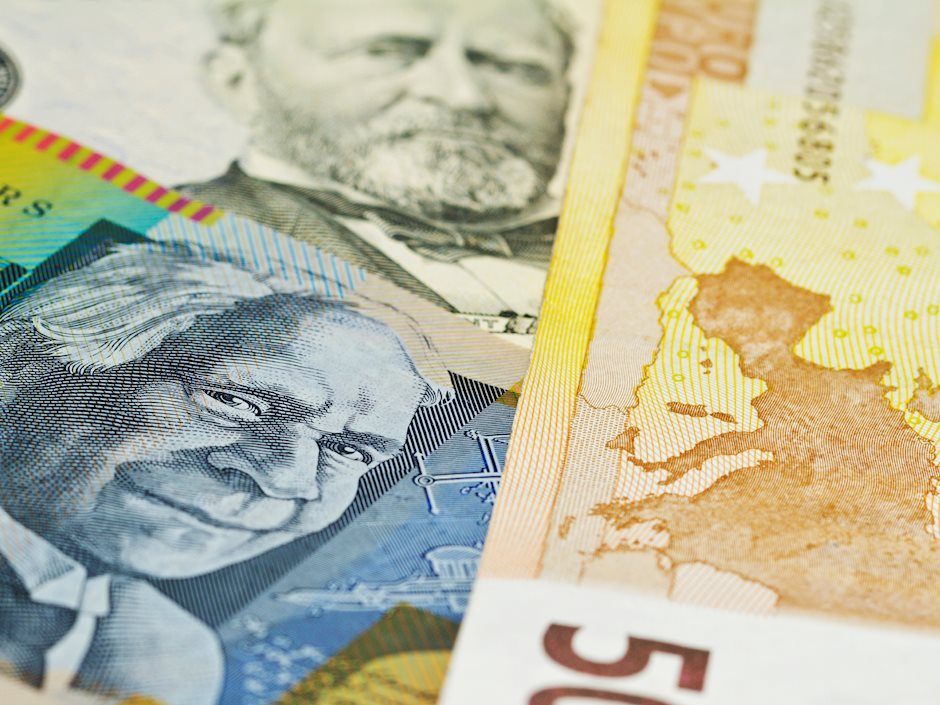EUR/AUD Price Forecast: Falls below 1.6100 as head and shoulders surfaces
- Euro experiences significant sell-off, dragging EUR/AUD below critical support levels to its lowest since October.
- Technical analysis indicates a confirmed head-and-shoulders pattern, suggesting extended downward momentum.
- Immediate supports are eyed at October's low of 1.6003 and June 2023's low of 1.5848, with a pattern target near 1.5750.
- Resistance levels to watch include 1.6200 and the 50-day SMA at 1.6283 if there is a reversal in bearish sentiment.

The Euro fell sharply against the Australian Dollar late in the North American session on Thursday. The single currency was the laggard of the FX space, with the EUR/USD pair falling to new yearly lows beneath 1.0500 and dragging the EUR/AUD pair below 1.6100 for the first time since early October. At the time of writing, the cross trades at 1.6087, down 0.70%.
EUR/AUD Price Forecast: Technical outlook
The EUR/AUD is biased downward. A head-and-shoulder pattern emerged, further confirmed by the exchange rate, diving below the neckline at around 1.6200 and opening the door for further downside. If the cross breaks below the October 2 swing low of 1.6003, the next support emerges at the June 15, 2023 low of 1.5848 before aiming for 1.5800. If surpassed, the next stop would be the minimum objective for the head-and-shoulders at around the 1.5750-75 range.
Conversely, if EUR/AUD climbs above 1.6200, the next resistance would be the neckline at around 1.6210. On further strength, the next resistance would be the 50-day Simple Moving Average (SMA) at 1.6283.
EUR/AUD Price Chart - Daily
Euro FAQs
The Euro is the currency for the 19 European Union countries that belong to the Eurozone. It is the second most heavily traded currency in the world behind the US Dollar. In 2022, it accounted for 31% of all foreign exchange transactions, with an average daily turnover of over $2.2 trillion a day. EUR/USD is the most heavily traded currency pair in the world, accounting for an estimated 30% off all transactions, followed by EUR/JPY (4%), EUR/GBP (3%) and EUR/AUD (2%).
The European Central Bank (ECB) in Frankfurt, Germany, is the reserve bank for the Eurozone. The ECB sets interest rates and manages monetary policy. The ECB’s primary mandate is to maintain price stability, which means either controlling inflation or stimulating growth. Its primary tool is the raising or lowering of interest rates. Relatively high interest rates – or the expectation of higher rates – will usually benefit the Euro and vice versa. The ECB Governing Council makes monetary policy decisions at meetings held eight times a year. Decisions are made by heads of the Eurozone national banks and six permanent members, including the President of the ECB, Christine Lagarde.
Eurozone inflation data, measured by the Harmonized Index of Consumer Prices (HICP), is an important econometric for the Euro. If inflation rises more than expected, especially if above the ECB’s 2% target, it obliges the ECB to raise interest rates to bring it back under control. Relatively high interest rates compared to its counterparts will usually benefit the Euro, as it makes the region more attractive as a place for global investors to park their money.
Data releases gauge the health of the economy and can impact on the Euro. Indicators such as GDP, Manufacturing and Services PMIs, employment, and consumer sentiment surveys can all influence the direction of the single currency. A strong economy is good for the Euro. Not only does it attract more foreign investment but it may encourage the ECB to put up interest rates, which will directly strengthen the Euro. Otherwise, if economic data is weak, the Euro is likely to fall. Economic data for the four largest economies in the euro area (Germany, France, Italy and Spain) are especially significant, as they account for 75% of the Eurozone’s economy.
Another significant data release for the Euro is the Trade Balance. This indicator measures the difference between what a country earns from its exports and what it spends on imports over a given period. If a country produces highly sought after exports then its currency will gain in value purely from the extra demand created from foreign buyers seeking to purchase these goods. Therefore, a positive net Trade Balance strengthens a currency and vice versa for a negative balance.
Author

Christian Borjon Valencia
FXStreet
Christian Borjon began his career as a retail trader in 2010, mainly focused on technical analysis and strategies around it. He started as a swing trader, as he used to work in another industry unrelated to the financial markets.


















